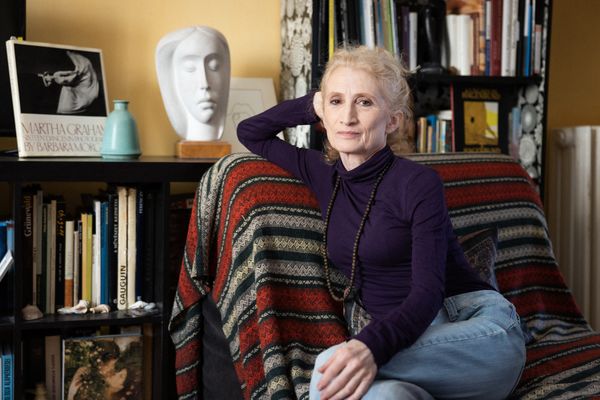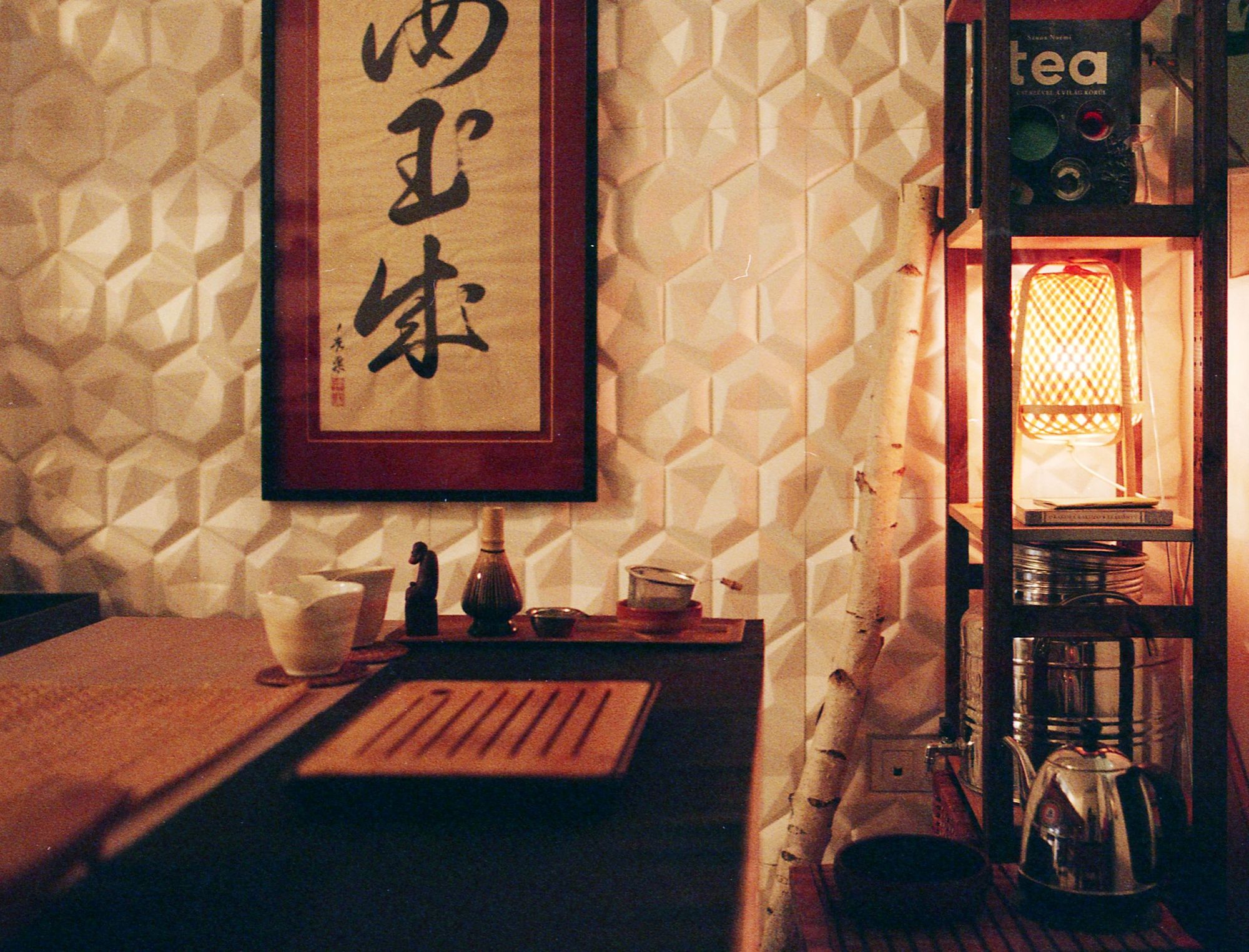Drinking tea, especially when well prepared, is a remedy for the body and soul. It has both a communal and meditative power. A Hungarian couple, Balázs and Dóri backpacked through the Far East to bring home not only the tea delicacies but also the life philosophy behind them. Traditional tea drinking is way more complex than just putting a filter in a big pot, pouring hot water over it, adding sugar and lemon, and then rushing on with your day. Tea leaves ‘crammed’ into a tea infuser is a mistake as well according to the orthodox view, as the leaves need space to open up. We visited the tea shop Teavolution in Budapest, where we did not only an interview but also a bit of tea tasting.
In Hungary, we don’t even use the expression ‘tea correctly,’ as we refer to every fruit or herb that we add hot water to as tea. In fact, tea is a Southeast Asian subtropical plant that, if allowed, grows into a tree, and whose cultivars are bred in the same way as wine grapes or coffee. There are therefore many parallels between tea, wine, and coffee cultivation. For instance, the difference between Indian and Chinese tea can be roughly equated with the robusta and arabica varieties of coffee: while the Indian variety (Sinensis Assamica) is the preferred choice for large-scale industrial production, Chinese tea (Sinesis) is often more refined in process and flavor. Owners of Teavolution Dóri and Balázs have also previously worked with wine and coffee, but tea was the one they found to have the most beneficial effects. It was also tea that set them on the path to leave their lives behind and venture into China, Japan, and Taiwan.

“We understood tea better thanks to our experiences with coffee courses and wine regions. In spite of all this, we took the time and energy to be constantly on the go as of 2014. These trips meant our summer and winter holidays, educational trips, and investments. We never went for sightseeing tours, only tea fields, tea factories, and tea houses to talk to local people,” Balázs shared. During their trips, they only made reservations for the first night, then they kept going according to locals’ recommendations from one place to the other. They followed their sense of adventure on tens of hours of traveling, hitchhiking and chance encounters to the most hidden places. “We always looked for the origin, we wanted to visit the most authentic places. First, we traveled through China, the center of Chinese tea culture on the east coast, then the original growing grounds of the tea plant in Yunnan, southern China, and afterward we traveled to Uji in Japan, where matcha was first made. We came to Taiwan by chance: at a tea expo in Shanghai, we met a friendly Taiwanese couple who offered to host us one day, and we said we were free the following day. We flew there the next day with a Chinese low-cost flight,” they shared their adventures. “For us, it’s very important to have a personal relationship with the producers and to see the journey of the tea we are distributing. On the other hand, you really have to go there, you have to be there, because most of them don’t respond to unknown email inquiries and they don’t send smaller batches of tea to Europe,” they add.
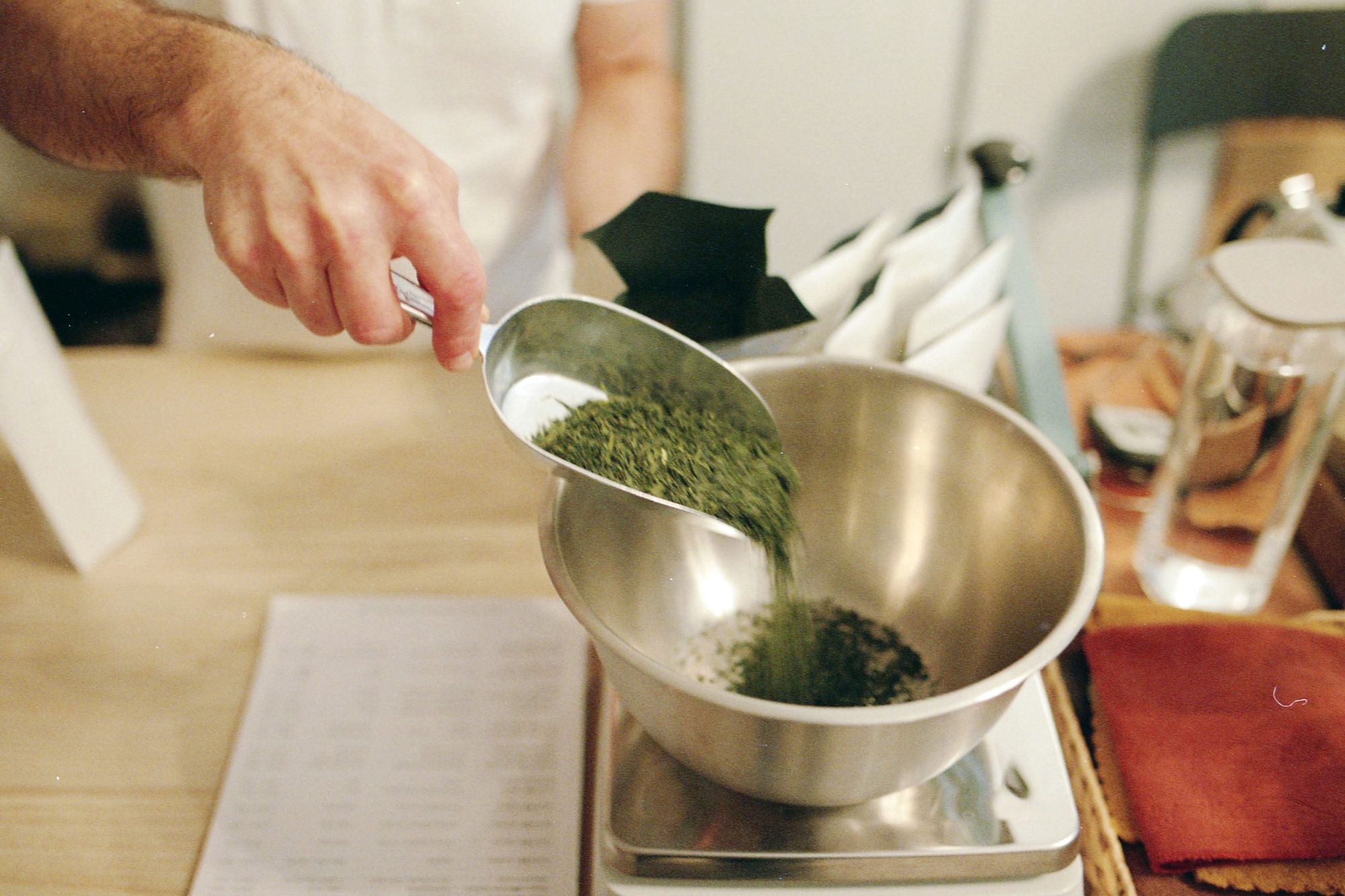
We start the tasting with green tea, whose freshness, as we learn, is crucial, so Dóri and Balázs have them transferred in small batches and store them in a fridge in their shop. The second tea in the pourer is an Oolong tea with a dark color and a strange flavor harmony, partly oxidized, harvested a little later than green tea. Balázs prepares the tea in small pots, this is another Asian habit; only make as much tea as you drink at once, so the quality doesn’t spoil. When you’re finished, you can make more rounds, with each round bringing out more and more flavors from the leaves. “One major “no-go” is tea infusers: they’re mainly designed for Indian CTC teas, which are like granules and very heavily steeped. But with so-called orthodox, traditionally processed teas, the leaves are almost entirely curled up and need space to open up. So even if you don’t have a traditional teapot, it’s better to let them float and then strain them. There are many ways to make good tea,” they share. Unlike strict coffee recipes, the temperature of the water can be personalized, depending on whether you want a stronger or softer result. “I adjust the temperature by hand: if it doesn’t burn my hands, and I can hold the spout filled with hot water then it will be good for the green tea as well. It will not be bitter. Other types (such as oolongs or black teas) need hotter water. When making tea, we like to experience physical sensations rather than relying on digital tools,” says Balázs, as we first examine the color of the tea, then the smell, and finally the taste, similar to wine tasting.


The ritualistic way of tea preparation and the “contemplative” attention to the body’s sensations make it a perfect meditation tool, during which we get attuned to the making of tea and then to the sensations of consuming it. “You have to practice to really be present, it’s the meditation itself: to notice if you drift away and return so that tea making doesn’t become a mechanical process. If you don’t focus, and suddenly the water burns your hand you’ll know that you weren’t present, but you can tell by the final result, its taste if it went well,” Balázs explains. Ceramics are essential for the tactile sensation of tea drinking: most of them are made in collaboration with a Hungarian ceramist Ágnes Nagy-György, but they also have traditional Far Eastern tea kits in the store.
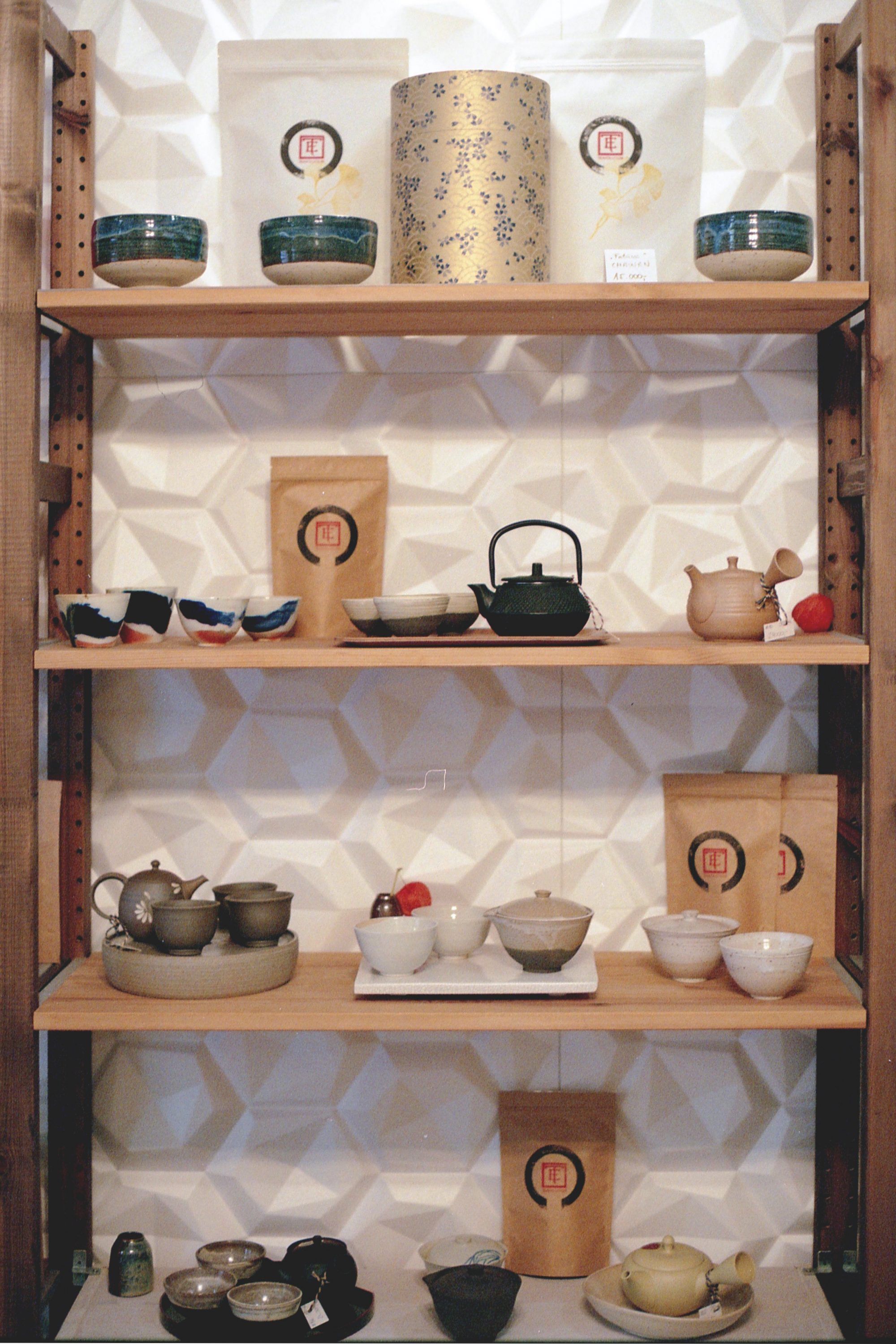
However, tea does not only help to turn inwards, but it can also provide a platform for a good conversation, as it “opens hearts.” In the Far East, people take the time to drink tea and talk to each other a lot. That’s why Balázs and Dóri think that tea drinking is not suitable for fast-paced hospitality: tea drinking takes time, even up to several infusions, which makes it harder to engage with new guests. Therefore, Teavolution only operated as a tea house in 2017 and 2019, and they feel it was their best decision to leave this function. They now run a tea shop and webshop as well as a tea room, where they host workshops and private tastings, but they have also organized tea drinking tours in the forest.

For dessert, we’re served matcha tea, which has been extremely popular lately in Europe and can be found in almost every specialty coffee house. Matcha originates from Japan, it’s a specially grown green tea that’s ground into powder. Zen Buddhist monks started consuming it over a thousand years ago, to make sure they stay awake during their long meditations. It has a very high antioxidant content, as you don’t only soak tea leaves, you consume them. Besides caffeine, it contains a lot of theanine, a natural, relaxing amino acid. “Calm alertness, that’s how you could best describe the effect of matcha,” says Balázs. Matcha latte, on the other hand, is a fully Western invention. Häagen-Dazs and Starbucks first brought matcha from Japan, and they immediately served it with milk to make its strong, ‘green-flavored’ aroma more consumable. However, traditional matcha is made of tea powder and water alone, which Balázs explains in detail in a Youtube video. Teavolution also delivers matcha and other tea specialties to several renowned specialty coffee houses (such as Budapest Barista, Caphe by Hai Nam, or Kaffeine just to name a few), but they also have a stable clientele in rural cities. For this reason, they are also known as specialty teas, which in their case means that the whole production chain is followed through and the product and preparation are of the highest quality.
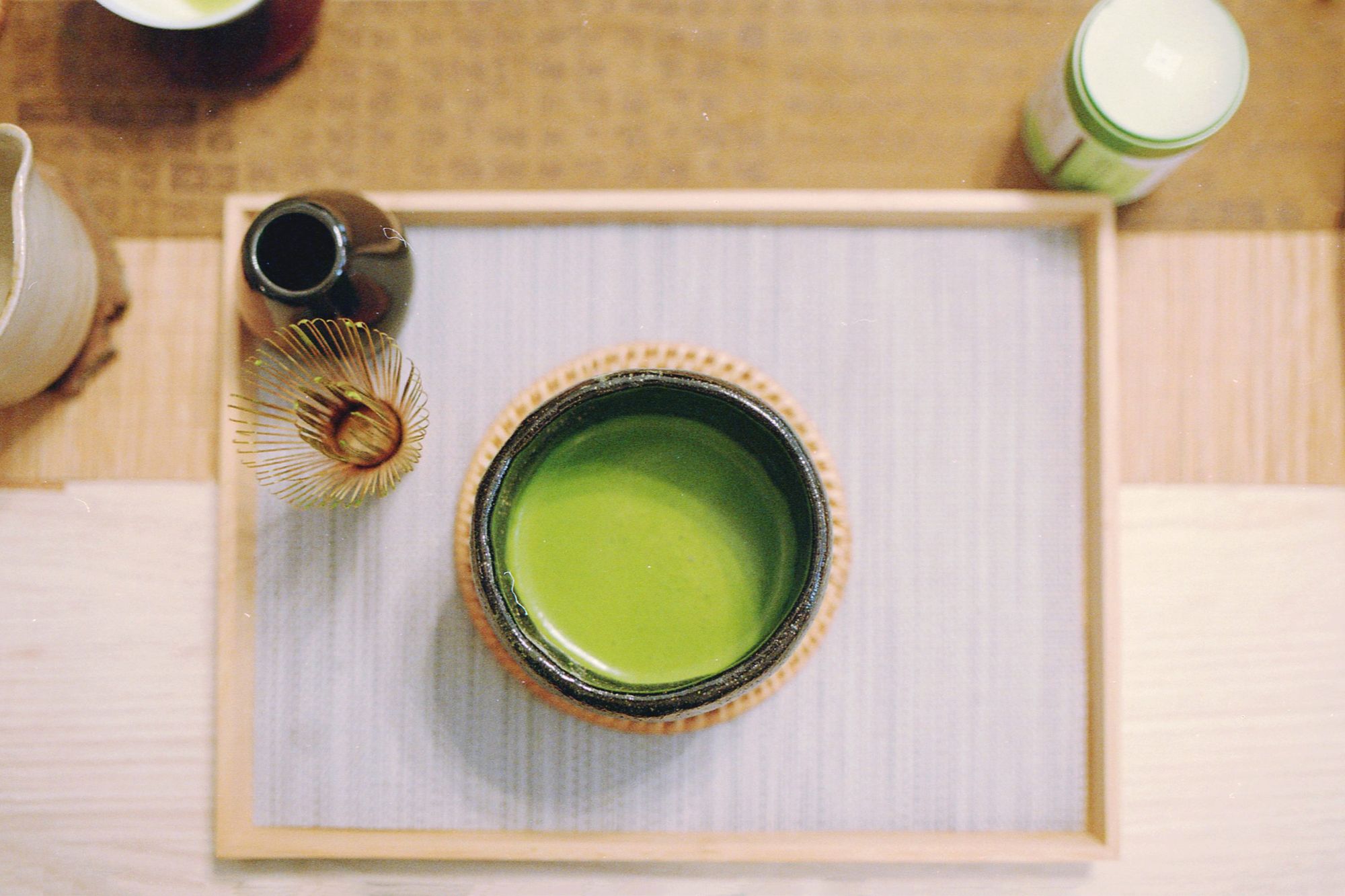
“The name Teavolution itself refers to the evolution of tea making and the knowledge behind it. I, myself have to keep developing to keep making better tea with more attention. The most important part is making the decision, taking the time off to learn and to be able to sit down and drink tea in our busy everyday life,” Balázs believes.
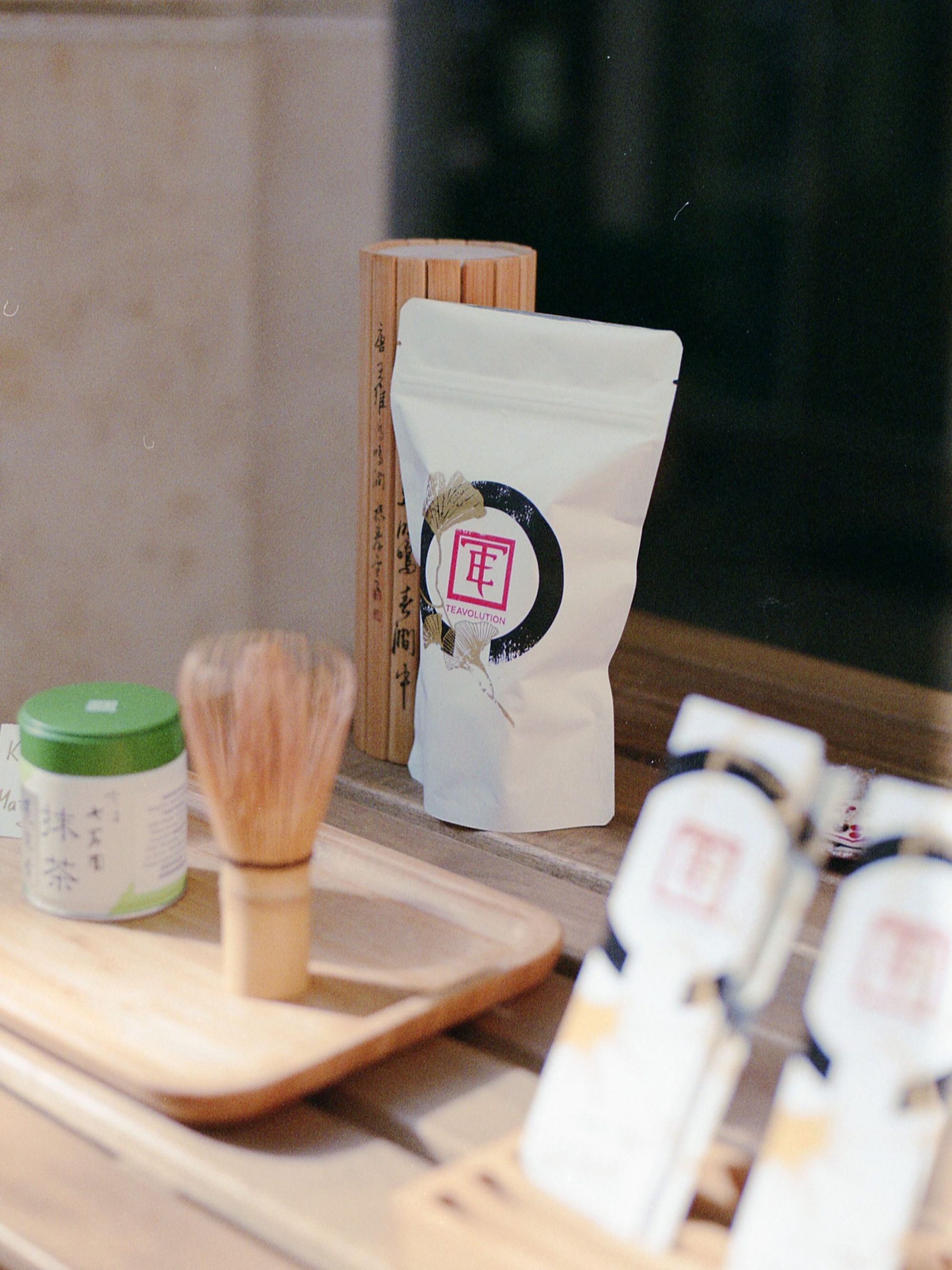
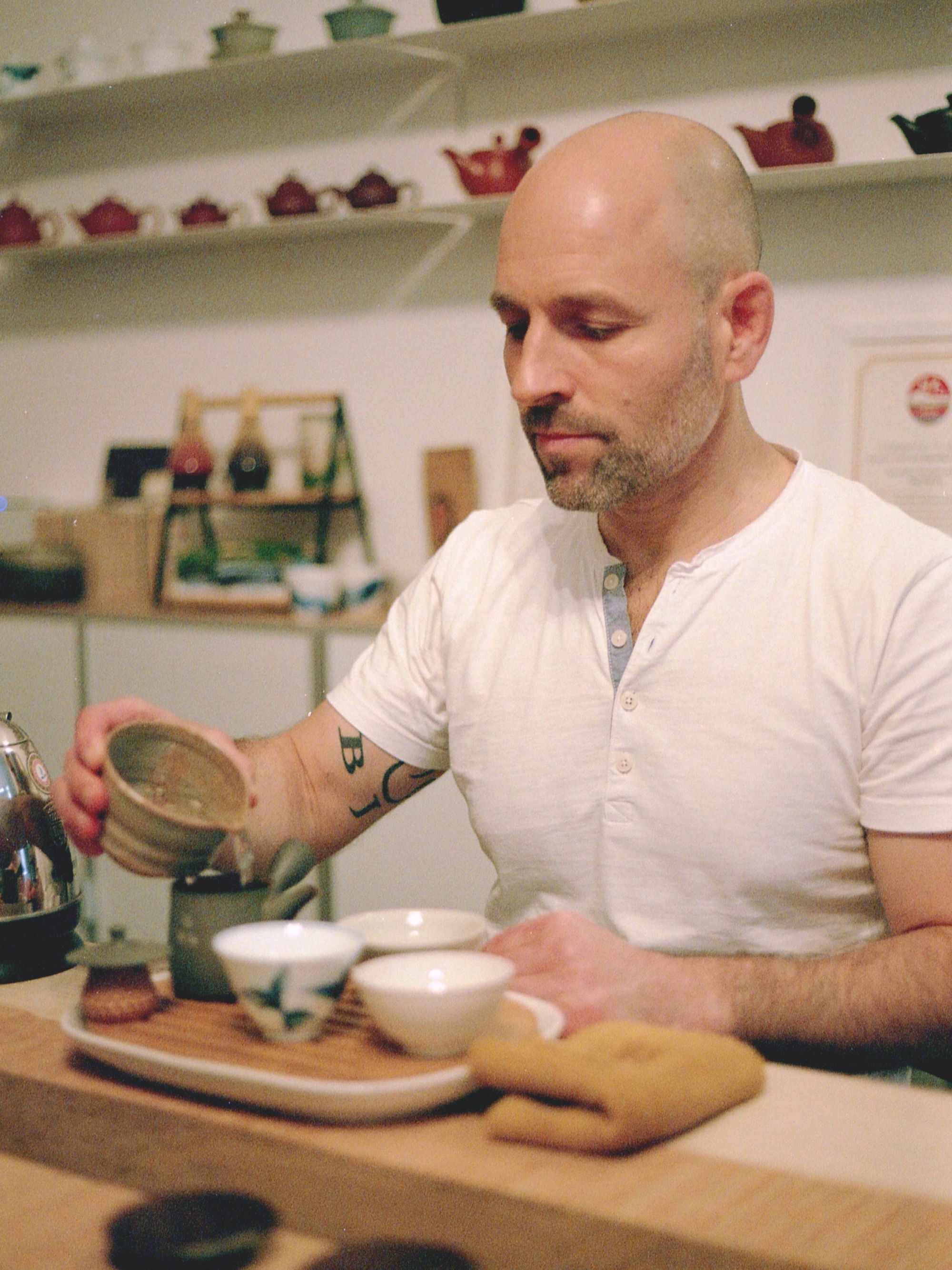
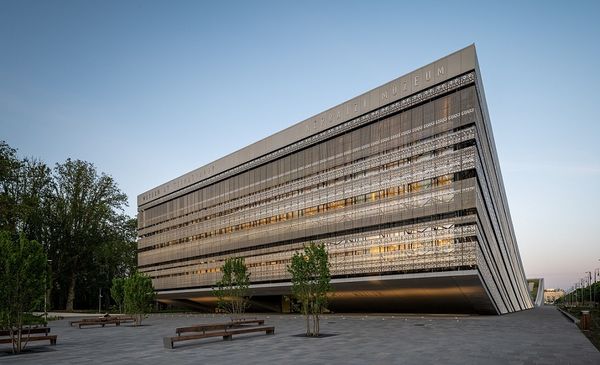
The new building of the Museum of Ethnography in Budapest opened its doors

DRK Budapest Skate Open: cash prize international skateboarding competition in the heart of Budapest
